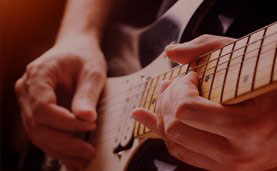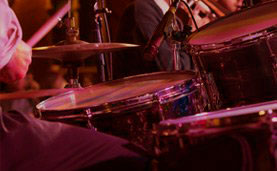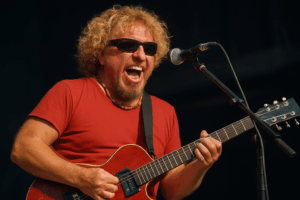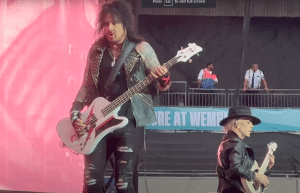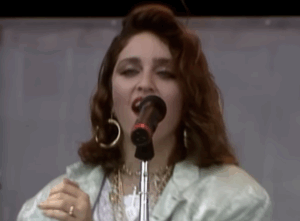These Classic Rock Hits Are Shockingly Good Without Instruments
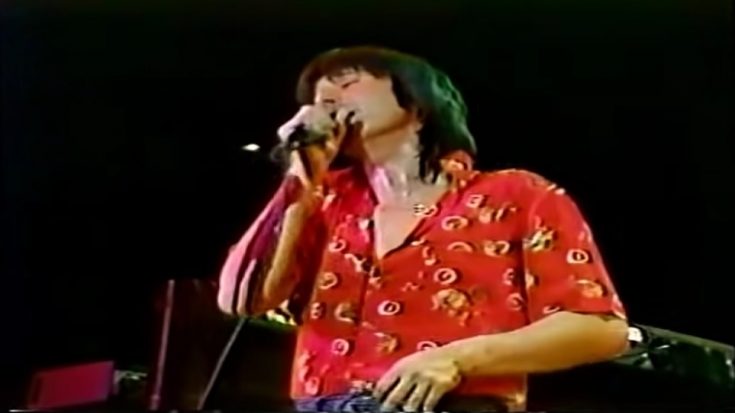
via EwerLord / YouTube
Rock music is often seen as inseparable from the instruments that shaped its identity — the guitars, the amps, the drums, the sheer volume. Yet over time, something unusual has emerged from outside the usual rock circles: vocal-only renditions that manage to hold the same power without leaning on traditional gear. A cappella has long thrived in folk, gospel, and soul, but when it brushes up against rock, it reveals a different kind of intensity built purely from the human voice.
Vocal groups approach these songs like intricate blueprints. Without strings or synths to carry the weight, every hook and rhythm has to be rebuilt through harmony, texture, and clever arrangement. Smaller groups can layer enough voices to mimic riffs and basslines, while larger ensembles often turn familiar rock tracks into something more expansive, pulling out details that get buried in the original recordings.
Re-creating the scale of a stadium anthem is no small task, yet many singers have taken it on with surprising results. Stripped of instruments, these versions highlight new emotions and unexpected corners of the songs they revisit. The selections that follow show just how strong a classic rock hit can be when every note comes from a voice — and nothing else.
“Bohemian Rhapsody”, covered by Pentatonix
Queen’s 1975 epic has long stood as one of rock’s most ambitious studio creations, with layers of harmony and dramatic shifts that feel tailor-made for vocal experimentation. It’s the kind of song that invites listeners into its larger-than-life world the moment the first line is sung. Over the decades, that theatrical opening and its towering opera section have pulled countless vocal groups toward it, eager to see how far the human voice can stretch.
Among the many attempts, the interpretation from Pentatonix remains one of the most striking. The group approached the song not as a novelty challenge but as a chance to rebuild its architecture from the ground up. Without guitars or keyboards to lean on, they stitched together harmonies that carry the emotional weight of the original while giving certain passages a clearer, more intimate shape.
Their performance, released in 2017, showcases the full range of what modern a cappella can do. From vocal percussion that mimics the pulse of a rock band to tone bends that echo Brian May’s famous guitar leads, the arrangement captures the song’s spirit without trying to imitate it beat for beat. It’s no wonder the piece has become a stable moment in their live shows — it’s a reminder of just how expressive the song’s framework really is when voices take the lead.
“How Deep Is Your Love” by Bee Gees
The Bee Gees built their legacy on harmonies that felt effortless, and that natural blend is what made their softer material so enduring. While people often associate the trio with disco’s late-’70s shine, their ballads carried a quiet emotional clarity that set them apart. “How Deep Is Your Love” is one of those tracks — a delicate melody that turns inward rather than chasing the dance floor.
The song’s reflective tone makes it perfect for vocal reinterpretation, which is why their a cappella performance on British television in 1998 remains so memorable. Without strings, electric piano, or the smooth production of the studio version, the brothers leaned entirely on phrasing and interplay. The result revealed just how grounded the song is in pure vocal expression.
Hearing them sing it this way, later in their career and stripped of any studio polish, gives the track a different presence. What emerges is a reminder of what made their songwriting so durable: three voices carrying the emotional weight of an entire arrangement, no extra elements required. With two of the three brothers gone, the performance has taken on an even deeper sense of significance.
“Battery”, covered by Van Canto
Metallica’s catalog isn’t the first place listeners expect to find something suited for vocal-only reinterpretation. “Battery,” with its breakneck tempo and razor-sharp riffs, is built on intensity, not delicacy. Yet it’s exactly that contrast that makes Van Canto’s version stand out — the idea that a song this heavy could be rebuilt without guitars feels almost impossible until you hear it happen.
Van Canto approaches their material like a metal band in everything but instrumentation. Their vocalists take on the role of rhythm guitars, lead fills, and even bass, stacking textures in a way that pushes the boundaries of what a cappella can capture. The refrain built around the song’s title becomes a percussive engine, echoing the momentum of the original track.
Hearing “Battery” performed this way highlights the precision within the chaos. The song’s structure, usually carried by amplified instruments, suddenly becomes clearer when voiced by actual human breath. It’s still fierce, still relentless, but filtered through an arrangement that depends on timing rather than distortion. That alone makes it one of the most surprising and entertaining a cappella adaptations to come from the metal world.
“Africa”, covered by Perpetuum Jazzile
Toto’s “Africa” has been covered in nearly every format imaginable, but nothing replicates the surprise of hearing it performed by a massive vocal ensemble. Perpetuum Jazzile’s live version became a viral moment for good reason: it turns the familiar soft-rock staple into something atmospheric and cinematic long before the first lyric is sung.
The performance opens with an unexpected flourish — a storm created entirely by hand. Snaps, pats, and rhythmic movements layer together to mimic rainfall and thunder, transforming the room into a soundscape before the melody even appears. It’s a playful choice, but it also shows the group’s confidence in using physical sound to build tension naturally.
Once the singing begins, the arrangement unfolds with precision. With a roster large enough to function as a choir, the group can recreate synth lines, harmonize lead melodies, and build a dynamic swell that respects the original while giving it a broader frame. It’s one of those rare reinterpretations that doesn’t compete with the studio version; it simply takes the song in a direction only a large-scale vocal group can achieve.
“Don’t Stop Believin’”, covered by Petra Haden
Journey’s signature anthem is designed for big moments — the kind of song that lives its fullest life in arenas and singalongs. Tackling it without instruments seems ambitious on paper, but Petra Haden’s interpretation proves it can thrive in a completely different environment. Her arrangement strips away every familiar element until only her voice carries the entire structure.
Haden has a long history of experimenting with vocal-only covers, and her attention to detail is what makes this one special. She rebuilds the keyboard motif, the climbing guitar figures, and the rhythmic pulse using layered tracks of her own voice. Each line is carefully placed, giving the arrangement a clarity that plays differently from the original’s widescreen production.
By the time she reaches the chorus, the performance has revealed its strongest quality: sincerity. Without amplification or instrumental peaks, the focus shifts entirely to the melody and the emotion behind it. That shift gives the song a different impact — one that feels personal, almost private, yet still true to the spirit that made it a rock standard in the first place.

